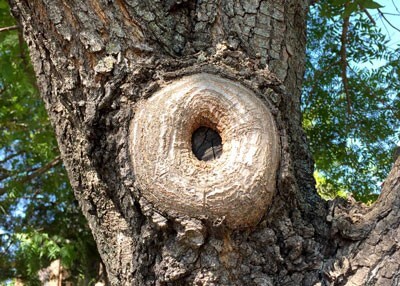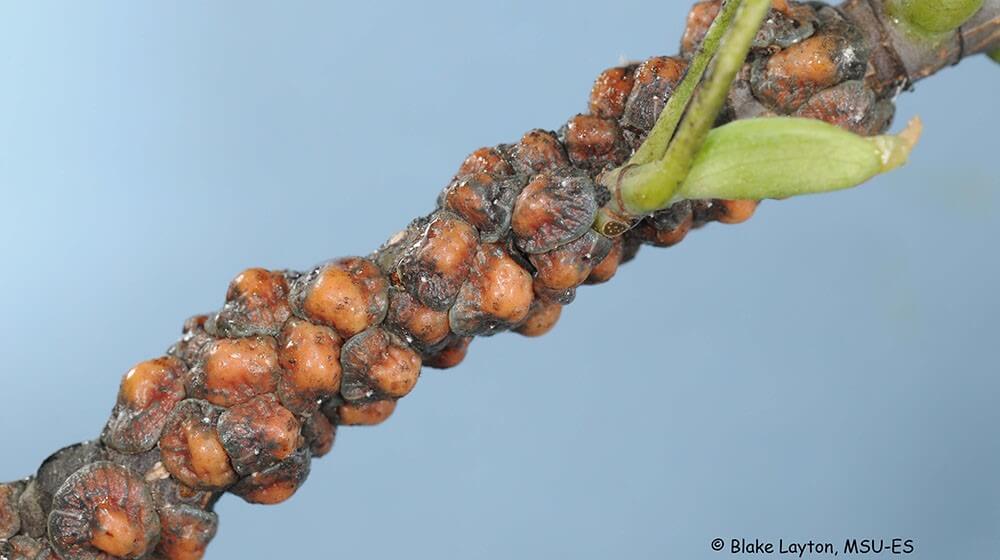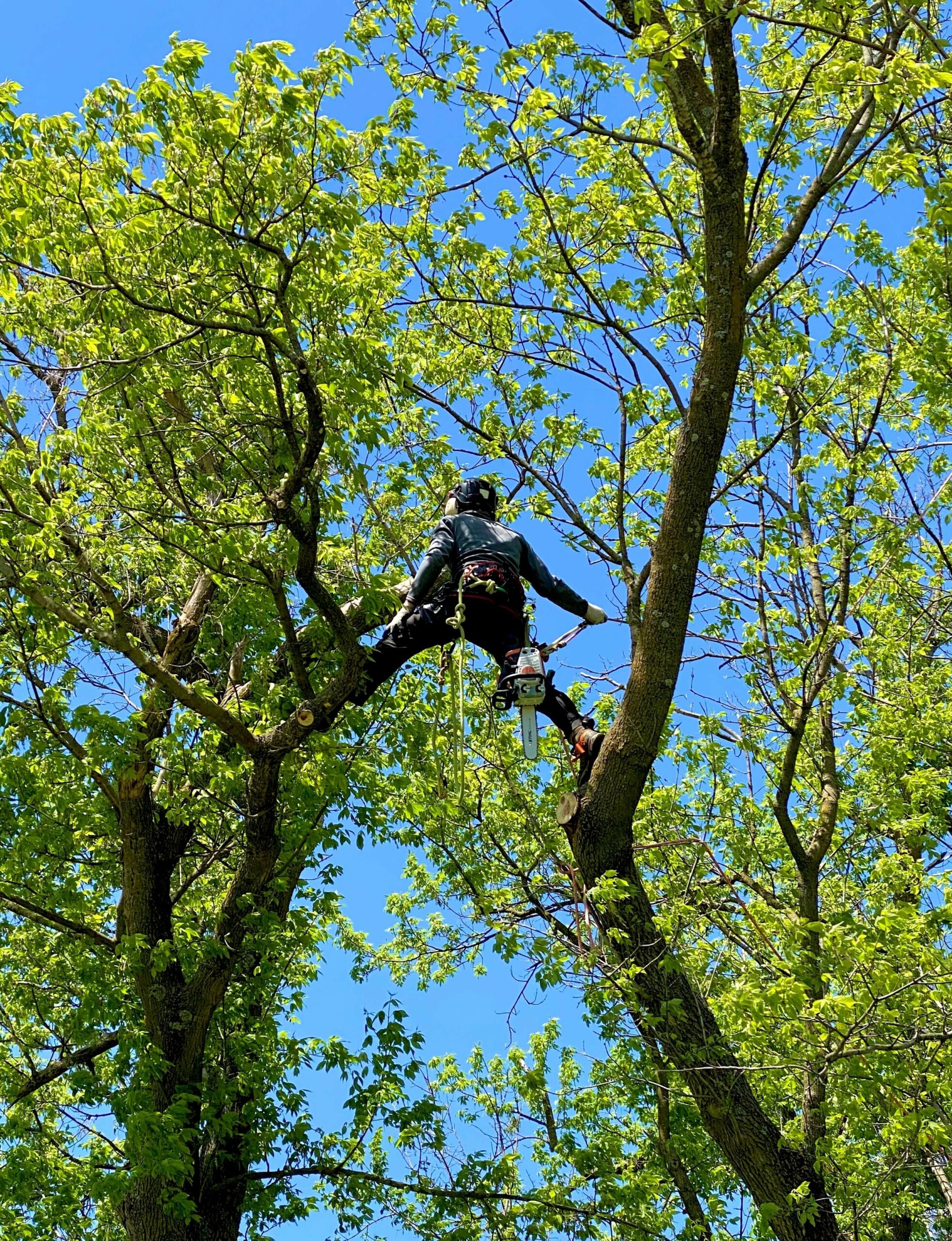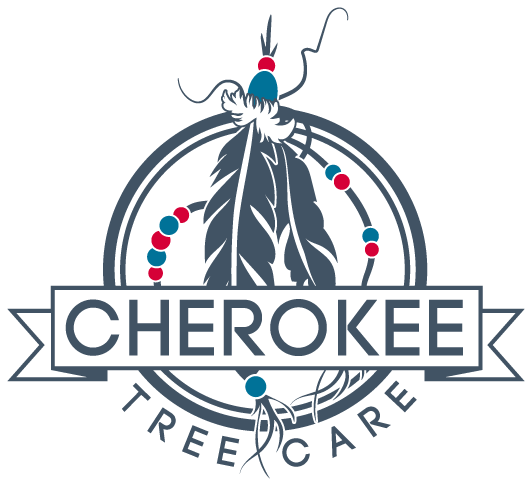We hope you had the opportunity to read last month’s blog – Common Tree Myths Part 1. We are continuing the conversation in this month’s blog with part two of common tree myths. We get many questions from our customers and there are a lot of misconceptions about our trees and how to care for them. Our goal is to educate our customers about how to best care for their trees.
Do I need to spray sealer on my pruning cuts?

Spraying or painting pruning cuts with a can of sealer is a dated practice that has been proven to be unnecessary and work against the tree’s ability to seal over wounds. To know better about a tree’s biology and defense systems, we need to understand that trees seal, they don’t heal. There’s a system occurring within your tree called “compartmentalization” which seals off decay to help stop the spread further into the tree. After a pruning cut is made, the tree will start growing over or sealing the wound to stop it from decaying.
Sealing spray and paint have been found to seal in moisture, which works against the tree’s natural defenses to stop the spread of decay. The most important thing to do to help your tree recover from pruning wounds is to implement proper pruning techniques. By making the smallest cuts possible and properly, the tree will be able to seal over wounds on its own over a shorter period.
We see problems occur when “flush cuts” are made and the branch bark collar is cut off with the limb. When this happens, there’s a larger area for the tree to seal over, adding years to the sealing process. Before it can seal over completely, decay sets in, causing a hollow decay spot in the trunk for squirrels, birds, and more moisture to enter.
So, the short answer to the above question is no. You don’t need to spray your trees with a sealer after proper pruning. Tree’s have an amazing ability to seal over wounds on their own.
Can’t you just spray everything on my property every month to keep my trees healthy?

We wish it were this simple. We really do. However, with Plant Health Care, we must learn about insects and diseases and their life cycles. We have an understanding of entomology (the study of bugs), when they emerge, which plants they favor, how many generations they have per year, and which products will be effective in treating them.
Take scale insects, for example. There are numerous types of scale insects, each attacking a different host of trees. The Tulip Scale on your Tulip Poplar (pictured above) won’t be on your Maples, the Japanese Maple Scale on your Maples won’t be on your Arborvitaes, and so on.
We first have to determine the type of scale on your tree, then determine the timing of our applications. We have systemic products that can help with these insects as they feed, but the only time we can spray them with a contact pesticide is when the crawler stage emerges. If we decided to spray them with a contact pesticide in March, it would do nothing since scale insects grow a covering that protects them from this type of treatment.
Timing and understanding of the insect we are dealing with are key factors in treating your trees properly.
Plant Health Care is complex, but our PHC team will know how to identify your trees, which pests they are susceptible to, and how and when to treat them. There is no blanket treatment for every property. When we write your Plant Health Care plan, it is specific to your trees and their needs.
Give us a call if you’d like someone from our Plant Health Care team to walk your property with you and talk about what trees you have and the insects and diseases they are susceptible to.
Don’t we need a bucket truck to prune trees?

When we get calls, we are often asked if we have a bucket truck. It is a common misconception that the only way to prune large trees is with the help of a bucket truck.
There are many reasons it is beneficial to have a climbing crew to prune your trees.
Accessibility is one of the biggest reasons we prefer climbing to a bucket truck. Some trees are not accessible to a bucket truck. Sometimes there is not enough area at the base of a tree to bring in a large bucket truck. If the tree is in a fenced backyard, fencing or landscaping may need to be removed to bring in a large truck.
There are also many larger species of trees such as the Tulip Poplar and Sycamore that are too tall for a bucket lift. And lastly, buckets are not as easy to maneuver through tightly branched trees and a person stationed within a bucket does not have the accessibility or reach that climbers have.
Awareness is another benefit of having climbers. When climbing, there is a better perspective from within the tree for tree surgery. When in a tree, a climber has the opportunity to be more cautious and mindful of their cuts.
And lastly, avoiding damage to not only the tree, but the client’s lawn and property are important factors to consider.
It is true that some trees just aren’t safe to climb. In this case, we have a lift that will fit through most gates and lift our crew 60-70 feet high if needed.
Our pruning team is committed to safety. We have weekly training sessions over proper climbing techniques and ANSI safety standards. In addition to this, we do an annual aerial rescue training that helps our pruning crew in being prepared in emergencies while aloft.
If your trees need removal or pruning, give us a call. We can help you and determine the best way to access your trees.

